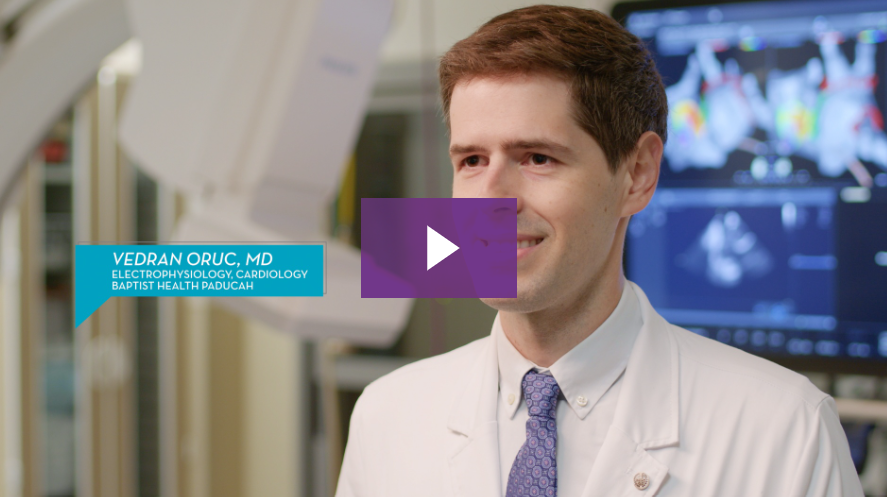Diagnosing and Treating Heart Arrhythmia in Paducah, KY

Diagnosing and Treating an Irregular Heartbeat Healthtalks Transcript:
Vedran Oruc, MD, Electrophysiology, Cardiology
Baptist Health Paducah
Peter Sierra, Paducah, Kentucky
Vedran Oruc, MD: Arrhythmias are abnormal heart rhythms. What we do in electrophysiology is we look for the types of abnormal heart rhythms. We then use specialized mapping techniques to find the source of the abnormal electricity and try to fix the abnormal electricity. Based on where those abnormalities are, we can oftentimes go into the heart [and] find the trouble spots. During procedures that we call ablations, we actually map and cauterize the problem area. Certain types of device implants, like pacemakers or defibrillators, can lessen someone's risk of having rhythm issues in the future.
Peter Sierra: Before, I wasn't overly concerned and I would say, "Well, I'm fatigued. I'm tired. It's work." Well, after the procedure and after the recovery period, I felt more energized, not feeling exhausted or tired. It's a very exciting feeling that I can check my heart. I have a device where I can check it and it says that it's in sync, so it's a great feeling.
Vedran Oruc, MD: There's lots of patients who have had years of rhythm issues and have been undertreated because of poor access to other sorts of institutions. The ability to do this locally for patients — that's an important step toward providing the type of environment where we can deliver patients the best possible care.


.jpg?rev=1e34cfc14356429384f3325f6e567a20)
.jpg?rev=5dbd88f4012d476db50e2d19142fb14a)